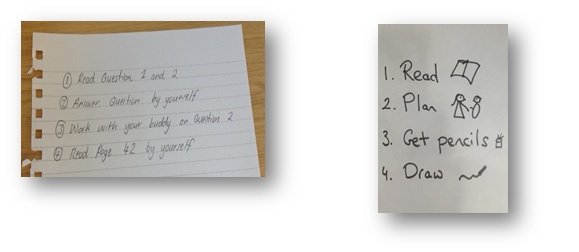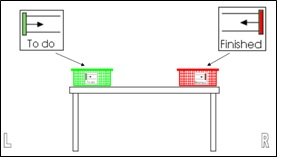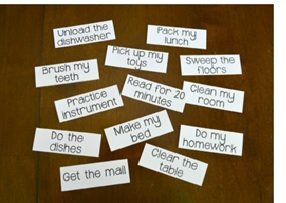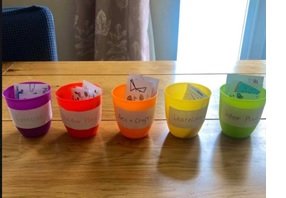Some students can find organising themselves to complete a task really difficult. Sometimes students can get confused about how long they should do work for, or how much effort they should put in. Below are some ideas you may find helpful to support them to do work at home. If you have any questions regarding this handout or would like further information/resources, please contact your school or setting Speech and Language Therapist. Click on the ‘download as PDF’ for examples and resources to download.
- Break down work in to manageable chunks. You could try cutting up worksheets into smaller, more manageable tasks so that they are easier to complete.
- Try using a task planner (attached to this handout) to help your child to think about what they might need to complete the task and to think about what steps are needed in order to complete it.
- Use visual schedules/timetables to support your child to know what will happen next. These can be using simple line drawings or written words.

- Use now/next boards, which are helpful for breaking down daily tasks for children who find too many steps overwhelming.
- Use start and finish baskets/bags. Place the worksheets/tasks they have to complete in a start bag/basket. Once they have completed this task, they can move it to the finish bag/basket. This will add some structure to the workload, which will be reassuring for some students.

- Timers are good to show your child how long they have got left on an activity. This can help them to stay focused on a task. You can find timer apps on your appstore (if you have a smart phone).
- Be physical and active where possible. Try playing games like hide and seek, roll the ball, bowl to get the next question.
- Take regular learning breaks and try not to make your child sit for too long. Ask them to help with you with a household chore, get them to engage in some exercise using YouTube, or try the exercises attached to this handout.
- Use post it notes or bits of paper. Talk to your child about all of the tasks you would like them to do and write these down together. Ask your child take ownership and organise when to attempt each task by putting the activities in order (e.g. first: ready for 20 minutes, then: do a worksheet).

- Organise activities to different cups (e.g. maths work, arts & crafts, exercise etc). Ask your child to pick out an activity from each cup to complete at a time. Perhaps you could aim to do one activity from each cup every day.

- Use an Effort–o–meter (see attached) to help students who find it difficult to make mistakes or worry about doing their best work all the time. Show and talk through with your child what level of effort is needed for the task they are attempting.
- Use a highlighting code to help your child to know what the most important things are to complete (such as underlining the first 2 questions). Some children will find worksheets overwhelming and will need you to provide structure and a clear start and end to the task.
Click on the ‘download as PDF’ for examples and resources to download.


